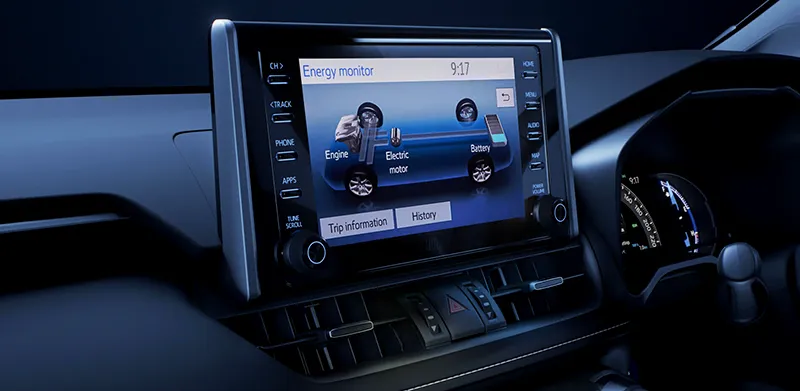Future mobility: Do hybrids make a strong case?
As of now, there are plenty of mild hybrid models on sale in the country. However, only a few strong hybrid models are available such as Maruti Grand Vitara, Toyota Hyryder and Honda City e:HEV.
Global mobility is witnessing a shift from fossil-fuelled internal combustion engines (ICE) to battery-powered electric vehicles (EVs) in order to curb emissions. The transition from ICEs to EVs is no walk in the park since it incorporates new technologies and a complete overhaul of the powertrain.
Surprisingly, EVs aren’t a recent invention. They actually date back to the late 19th century but didn’t come to prominence until recently when tighter emission norms and a sharp rise in fuel prices have started to affect ICEs.

Birth of electric vehicles (source: Wikipedia)
While EVs will definitely be the choice of mobility in the future, this transition from ICEs will take time and will require an investment of huge capital and resources. Moreover, the infrastructure to support EV charging is still in its nascent stage of development and not strong enough to support mass adoption of EVs at this point in time.
Hybrid vehicles as a solution
As a solution, the global auto industry has opted for hybrid vehicles that use two or more power sources. In a typical hybrid car, an ICE (petrol or diesel) is mated to one or more electric motors that are powered by a battery. This makes hybrids the best of both worlds– providing clean and efficient driving by bringing down emissions without having to worry about range.
Hybrid vehicles fall into three categories– mild hybrid, strong hybrid and plug-in hybrid, all consisting of an IC engine but its dependency varies in each type. We’ll save the technical details for another article but the important thing to note here is that all hybrid vehicles not only conserve fuel but also produce less CO2 emissions. They are also comparatively more affordable than their fully electric counterparts.

Construction of a contemporary mild hybrid powertrain where the battery and electric motor provide a boost to the IC engine (source: Audi)
Therefore, it is pretty well established that the road to fully electric vehicles will be through hybrids. However, hybrids come with their own set of challenges.
Challenges faced by hybrids
Hybrids have a complex powertrain construction making them very difficult to maintain as compared to pure ICE vehicles and as a result, also have a higher maintenance cost attached. Adding to the challenges are battery disposal, recycling and replacement which are also expensive
Despite featuring two or more power sources, hybrids are usually very conservative in their power delivery as compared to their ICE counterparts. This might dissuade performance enthusiasts from opting for a hybrid vehicle. Moreover, hybrids are not known to be good handlers on roads due to the added weight of a battery and electric motor on top of an IC engine.

IC engine acts as a generator in a plug-in hybrid or strong hybrid vehicle (source: Lexus)
In countries like India, where hybrid vehicles aren’t given tax cuts like EVs, they can be significantly more expensive than pure ICE models. In fact, in India, mild hybrids attract 29% tax and strong hybrids attract 43% tax whereas fully electric vehicles are only levied 5% tax.
Factors favouring hybrids
Hybrid vehicles are definitely more environment friendly than their ICE counterparts with low levels of emissions. Not only do they run cleaner, but are more fuel efficient than conventional fossil-fuelled vehicles. This, in turn, results in a lower running cost due to less dependency on petrol or diesel. Therefore, making up for the steep initial buying price.
Although hybrids usually don’t offer exhilarating performance, the electric motor works in tandem with the ICE to offer an additional boost when starting, accelerating, overtaking or climbing an uphill. Strong hybrids and plug-in hybrids can also run on pure electric power for a limited distance which offers a quiet and relaxed driving experience.

Infotainment showing energy distribution in hybrid vehicles (source: Shutterstock)
Further, features like automatic start/stop help in saving precious fuel. Batteries generally derive energy from the IC engine where the latter acts as a generator. The longevity of the battery is further enhanced by the presence of regenerative braking that helps recharge the battery to a certain extent.
More importantly, hybrids reduce dependency on petrol/diesel as well as charging stations. As a result, sales of hybrids have gone up which could result in higher average resale value in the future.
Do hybrid vehicles make a strong business case?
In our opinion, yes hybrids do make a strong business case simply because they fulfil most of our requirements without bringing significant changes to driving patterns or increasing dependency on external infrastructure. They have proven to be the perfect stepping stone for this transition from pure ICE to EVs.
However, they need to be given the right impetus by governing authorities for mass adoption in the market. Especially in India, the government needs to rework on the tax structure and lower the tax rates levied on such vehicles for mass adoption of hybrid vehicles.

Classification of powertrains used in vehicles (source: Wikipedia)
X-Trail, Juke, Qashqai: Nissan aims to shake up Indian market with SUV lineup
In fact, the government of India has started working towards a more balanced structure that aligns taxation rates with emission norms rather than levying taxes based on the type of powertrain used on the vehicle. This will reduce the cost of hybrids and give them a much-needed push.
Also, localising the manufacture of hybrid vehicles and sharing of components in multiple models will help economies of scale and bring down the cost. The most prominent example, in this case, is the development of the Maruti Suzuki Grand Vitara and Toyota Urban Cruiser Hyryder. Despite having distinct top hats, both models are essentially the same underneath with technology shared by the two auto brands.
(The copy was updated to fix a typo.)
Edited by Affirunisa Kankudti







